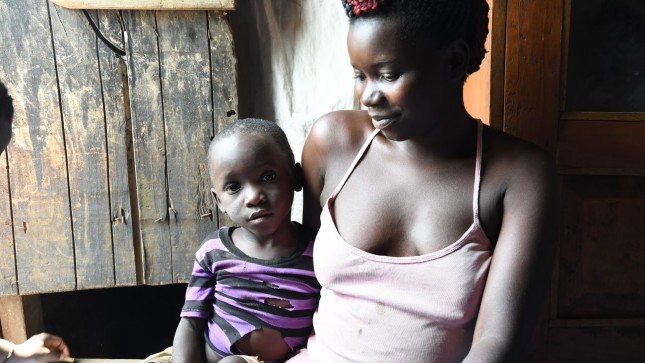-
How Much Does It Cost to Save a Mother’s Life?

Calls to action, strategy development, and multiple initiatives over the last decade have made clear how important it is to end preventable maternal and perinatal deaths. But we still don’t have a comprehensive understanding of how much saving these mothers and newborns, and preventing stillbirths will cost.
To get a better sense of the investment required and how cost-effective interventions might be, Saving Mothers, Giving Life (SMGL), a public-private partnership, which launched in 2012, used a health systems strengthening approach to rapidly and significantly reduce maternal deaths in Uganda and Zambia. To understand how much money would be needed to address all key delays that prevent women from accessing life-saving medical care in a timely manner—delays in seeking, reaching, and receiving care—we tallied the costs. We then calculated cost-effectiveness.
The community-wide maternal mortality ratio was reduced by 44 percent in program-supported districts in Uganda and by 41 percent in Zambia SMGL districts in five years. Saving Mothers, Giving Life also committed to capturing the initiative’s investments and analyzing cost-effectiveness in both countries. The results of our three-delay costing study, which were recently published in Global Health: Science and Practice, reveal critical information needed to comprehend the magnitude of funding needed to eliminate these preventable deaths.
Lives on the Line
In Uganda at the end of the initiative, we found that maternal and newborn health services (community and facility) cost about $1.36 per person per year. $1.36 is less than one-quarter of 1 percent of the per capita GDP of $692 in Uganda. In Zambia, SMGL cost about $4.85 per person per year; less than one-half of 1 percent of per capita GDP of $1,257 in Zambia.
We estimate that it costs about $10,300 to prevent a maternal and perinatal death in Uganda and $12,500 to prevent a maternal and perinatal death in Zambia. Assuming that people live to the average life expectancy, this means that in Uganda it cost $177 per year of life gained and in Zambia it cost $206 per year of life gained.
According to the World Health Organization’s definition, the program was “very cost-effective” in each case, because the cost per year of life a mother could gain is less than gross domestic product (GDP) per capita. Our numbers show that the Saving Mothers, Giving Life program cost 25.6 percent of GDP per capita per life-year gained in Uganda and 16.4 percent of GDP per capita per life-year gained in Zambia.
Calculating Cost-Effectiveness
By definition, cost-effectiveness calculations require data on the costs and effects of a program. Costs are the value of resources used for maternal and newborn health services: (1) in health facilities to improve quality; (2) in communities to increase demand; (3) for transport and maternity waiting homes to accelerate access; (4) and for investments to strengthen the system. Effects are the benefits of a program. For our study, the benefits were the number of prevented mothers and perinates’ deaths (newborns and stillbirths). Based on these deaths, we estimated the number of life-years saved. We did not capture morbidities or include them in the benefit gained as measured by DALYs. We also did not include benefits gained by others who were treated and saved by the strengthened systems. Thus, the effects reported are no doubt conservative.
SMGL partners used gold-standard methods (Reproductive Age Mortality Survey [RAMOS] in Uganda and a census in Zambia) to measure the number of maternal and perinatal deaths in 2012 and in 2016. Costs were gathered based on reviews of staffing, drugs, equipment, vehicles, etc. at a sample of health facilities and interviews with government and program implementers. To correct for changes in costs and effects in SMGL areas not due to SMGL interventions, we adjusted the values of cost and effect by measuring changes in comparison districts (cost) or national trends (effect).
Ripple Effects in the Developing World
This exercise in costing and compassion becomes a global public health imperative when viewed through the lens of inequality. More than 99 percent of maternity-related deaths occur in the developing world. These deaths are not caused by exotic diseases but by conditions that are largely treatable with known, low-cost interventions. Each maternal death, though rare, has profound ripple effects. It puts the newborn at high risk and decreases the survival, educational attainment, health, and well-being of the woman’s other children. Maternal deaths also have negative impacts on communities and, in aggregate, on national economies.
While results from this study are encouraging, they are just the beginning. We need more high-quality studies to determine the cost of all three delays in different geographic and cultural settings with varied mortality profiles and health systems. This will provide a clearer picture of the financial commitments the global donor community and national duty-bearers must make to ensure that “ending all preventable maternal deaths by 2030” is not just a hollow promise, but a reachable objective that involves a clear investment to succeed.
As more evidence becomes available, global dialog and consensus building by stakeholders and gatekeepers will need to determine if we are willing to mobilize and spend what is necessary to achieve the results we seek.
This post is based on findings originally published in the following article:
Johns B, Hangoma P, Atuyambe L, Faye S, Tumwine M, Zulu C, Levitt M, Tembo T, Healey J, Mugasha C, Conlon CM, 2019. “The costs and cost-effectiveness of a district strengthening strategy to mitigate the three delays to quality maternal healthcare: Results from Uganda and Zambia” Global Health: Science and Practice 7(Supplement 1): S104–S122.
Ben Johns, PhD, is a Senior Associate and Scientist at Abt Associates.
Claudia Morrissey Conlon, MD, MPH, is the U.S. Government Lead for Saving Mothers, Giving Life.
Photo Credit: Namusika Teopista is 7 months pregnant with her fourth child. Shown with her youngest son, Uganda. Courtesy of Amy Fowler/USAID
 A Publication of the Stimson Center.
A Publication of the Stimson Center.



